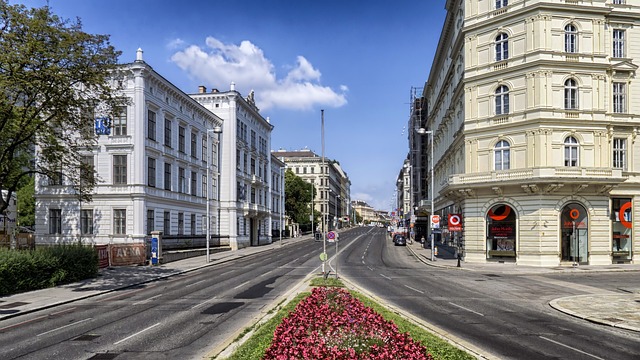Austria, a country renowned for its stunning Alpine landscapes, rich cultural heritage, and high quality of life, is also a hub for skilled professionals seeking new opportunities. For those looking to work and settle in Austria, the Red-White-Red Card is a key gateway. This immigration scheme is designed to attract highly qualified workers from around the world, offering them a chance to contribute to Austria’s thriving economy while enjoying the benefits of living in one of Europe’s most prosperous nations. In this article, we will explore the Red-White-Red Card in detail, covering its purpose, eligibility criteria, application process, and the benefits it offers to skilled workers.
What is the Red-White-Red Card?
The Red-White-Red Card is Austria’s answer to the global competition for talent. Introduced in 2011, this immigration program aims to attract skilled workers, particularly in sectors where there is a shortage of qualified professionals. The card is named after the colors of the Austrian flag, symbolizing the country’s commitment to welcoming individuals who can contribute to its economic and social development.
The Red-White-Red Card is not just a work permit; it is a residence and employment authorization combined. It allows non-EU/EEA citizens to live and work in Austria for a specified period, with the possibility of extending their stay or even obtaining permanent residency.
Eligibility Criteria for the Red-White-Red Card
To qualify for the Red-White-Red Card, applicants must meet specific criteria based on their skills, qualifications, and professional experience. The program is divided into several categories, each tailored to different types of skilled workers:
1. Very Highly Qualified Workers
- This category is designed for individuals with exceptional qualifications, such as university degrees, specialized skills, or significant professional experience.
- Applicants must score at least 70 points on the Red-White-Red Card points-based system, which evaluates factors like education, work experience, language skills, and age.
- No job offer is required for this category, making it an attractive option for highly skilled professionals.
2. Skilled Workers in Shortage Occupations
- Austria maintains a list of occupations that are in high demand, such as engineers, IT specialists, healthcare professionals, and tradespeople.
- Applicants must have a job offer in one of these shortage occupations and meet the required qualifications.
- A minimum of 55 points is required on the points-based system.
3. Other Key Workers
- This category is for individuals who may not qualify under the first two categories but still possess valuable skills and experience.
- Applicants must have a job offer and meet specific criteria related to their profession and qualifications.
4. Graduates of Austrian Universities
- International students who have completed their studies at an Austrian university can apply for the Red-White-Red Card to stay and work in the country.
- This category is designed to retain talent and encourage graduates to contribute to Austria’s workforce.
5. Self-Employed Key Workers
- Entrepreneurs and self-employed individuals who plan to start a business in Austria may also be eligible for the Red-White-Red Card.
- Applicants must demonstrate that their business will have a positive economic impact and create jobs.
The Points-Based System
The Red-White-Red Card uses a points-based system to evaluate applicants. Points are awarded based on the following criteria:
- Education: Higher qualifications, such as a master’s or doctoral degree, earn more points.
- Work Experience: Relevant professional experience, especially in shortage occupations, is highly valued.
- Language Skills: Proficiency in German or English can significantly boost an applicant’s score.
- Age: Younger applicants (under 35) receive more points, as they are seen as having a longer potential contribution to the workforce.
- Other Factors: Additional points may be awarded for ties to Austria, such as previous study or work experience in the country.
Application Process
The application process for the Red-White-Red Card involves several steps:
- Determine Eligibility: Assess which category you qualify for and gather the necessary documents, such as proof of qualifications, work experience, and language skills.
- Job Offer (if required): Secure a job offer from an Austrian employer if your chosen category requires it.
- Submit Application: Apply at the Austrian embassy or consulate in your home country. The application must include all required documents and proof of points.
- Wait for Approval: The processing time can vary, but it typically takes several weeks to a few months.
- Relocate to Austria: Once approved, you can move to Austria and begin working. You will need to register your residence and obtain a work permit.
Benefits of the Red-White-Red Card
The Red-White-Red Card offers numerous benefits to skilled workers:
- Work and Residence Authorization: The card allows you to live and work in Austria legally.
- Pathway to Permanent Residency: After holding the Red-White-Red Card for a certain period, you may be eligible to apply for permanent residency.
- Family Reunification: You can bring your family members to Austria under the family reunification scheme.
- Access to Social Services: Cardholders have access to Austria’s excellent healthcare, education, and social security systems.
- High Quality of Life: Austria consistently ranks among the best countries in the world for quality of life, offering a safe, clean, and culturally rich environment.
Challenges and Considerations
While the Red-White-Red Card is an excellent opportunity, there are some challenges to consider:
- Language Barrier: While English is widely spoken, proficiency in German is often required for many jobs and daily life.
- Competition: The points-based system means that only the most qualified applicants will succeed.
- Cost of Living: Austria, particularly cities like Vienna and Salzburg, can be expensive, so financial planning is essential.

اترك تعليقاً